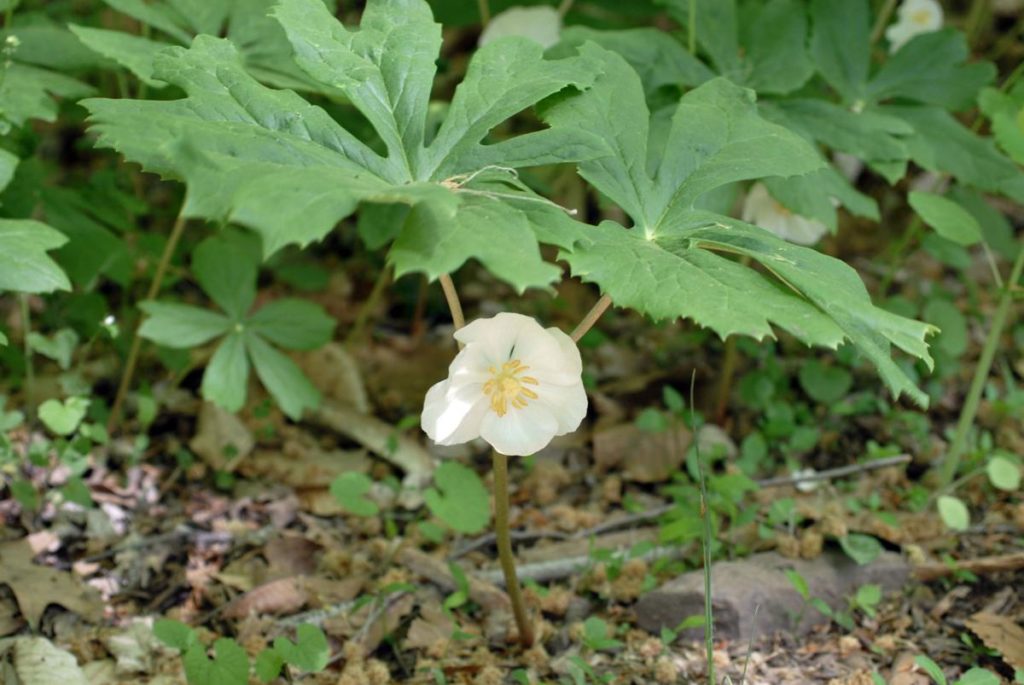Native Bloom: MAYAPPLE
Awake! This woodland rambler is an early riser from winter’s slumber. Consider mayapple a welcome harbinger of spring.
State of popularity:
Virginia is for Lovers … of mayapples! The native perennial (Podophyllum peltatum) can be found in almost every part of the state.
What’s in a name: The moniker suggests May beauty, but Richmond’s mayapple blooms often arrive in April. Other common names reflect its fruit and those that eat it: hog apple, ground lemon, Indian apple, devil’s apple and raccoon berry.
No lone ranger: Left undisturbed, mayapples can blanket a forest floor with glossy green beauty, thanks to rhizomes (underground stems). Over time, the slow-growing plants can form massive colonies, sometimes as much as 100 years old.
Nature’s parasol: As each palmlike leaf emerges, it folds over a single stalk. The stem grows upward, and the leaf slowly opens like a tiny umbrella preparing for rain.
Hide-and-seek:
Tucked beneath the droopy green leaves, the mayapple’s flower hides from view. Each flower’s snow-white petals encircle at least 12 bold-yellow stamens, which makes the search worthwhile.
Take heed! The flower of an established plant gives way each summer to one miniature fruit, but beware: The fruit is poisonous when green. Once ripened to a pale yellow, the fruit may be safe to eat, but all other plant parts are poisonous to humans and pets.
Lil’ stinker: Avoid a sniff. The flower’s essence can be quite nauseating.
Borderline call: Mayapple is not the best border plant, as it naturalizes freely and loses its foliage during summer dormancy. But it is well-suited for wooded settings and native plant gardens.
Where you can find Mayapples:
Mayapples grow in their native habitats within the woodland gardens at Lewis Ginter Botanical Garden. Keep an eye out next time you visit.
This article first appeared in Discover Richmond, part of the Richmond Times-Dispatch.
